RRP Question: Does Removing Aluminum Siding Fall Under the RRP Rule?
Question:

"Theoretically, aluminum siding came with paint on it…..and most was installed before 1978. Does anyone know if the factory paint on aluminum siding has lead in it? Intuitively, one would pull it off without concern for lead, but I have a client who has asked specifically."
Gregory A. Antonioli, GCP, President
Out of the Woods Construction and Cabinetry
Shawn’s Answer:
Greg:
 The rule includes all painted or coated surfaces. So yes, the siding must be assumed to have lead until tested otherwise.
The rule includes all painted or coated surfaces. So yes, the siding must be assumed to have lead until tested otherwise.
Note: My opinion as expressed above is based on the fact that the painted surface is being “disturbed”. Here is an interesting conversation about this topic on the JLC forum.
Aluminum siding during that era was manufactured by many different companies so it would not be wise to assume they all used the same paint or coating. Even if you test a product on one house and find it lead free, under the RRP Rule you must assume that same product might have lead if installed on any other building.
Here is one that might seem crazy. Along the same vein, even if you built an addition or deck at a home after 1977, and you know all the products you used were purchased and installed after 1977, if returning to work on the addition or deck you must still assume the addition or deck may contain lead. The only way around this is to test it to prove the absence of lead under the rule.
Something often missed or overlooked is if the original siding under the aluminum siding contains lead. If you have to remove that siding too or even just disturb more than 20 square feet of the old siding when removing the aluminum siding, then the RRP Rule will apply.
Here is what the EPA says at their RRP FAQ area about removing aluminum siding:
Question:
I am removing aluminum siding from a pre-1978 home. The aluminum siding was nailed over the top of painted wood siding that tested positive for lead. The underlying painted surface is greater than twenty-square feet. Must I comply with the Rule when removing the aluminum siding?
EPA Answer:
 The work practices for exterior projects are based on a performance standard – if the activity disturbs a painted surface (generally, by creating paint chips or dust) in excess of 20 square feet, the work area must be contained so that dust or debris does not leave the work area while the renovation is being performed. In this case, if the removal of the aluminum siding results in the disturbance of paint in excess of 20 square feet, then the RRP Rule applies. However, if the removal activity could be performed in such a way that does not disturb 20 square feet of painted surface, then the RRP Rule would not apply.
The work practices for exterior projects are based on a performance standard – if the activity disturbs a painted surface (generally, by creating paint chips or dust) in excess of 20 square feet, the work area must be contained so that dust or debris does not leave the work area while the renovation is being performed. In this case, if the removal of the aluminum siding results in the disturbance of paint in excess of 20 square feet, then the RRP Rule applies. However, if the removal activity could be performed in such a way that does not disturb 20 square feet of painted surface, then the RRP Rule would not apply.
EPA recognizes that this may be difficult to determine in advance of the renovation activity. However, the renovator is the person with the expertise and experience to make this determination on a case-by-case basis. In such a situation, a renovator should consider how factors like the condition of the underlying paint or the chosen method of removal may increase or decrease the likelihood for a disturbance of paint. If there is still uncertainty, EPA recommends that renovators err on the side of caution and be prepared to contain any dust and debris.

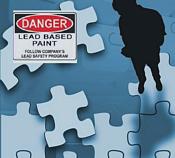 Looking for accurate information about the EPA RRP rule?
Looking for accurate information about the EPA RRP rule? 
 As EPA amends the RRP rule, renovators working in states that have taken over the rule from EPA need to know if and how these states incorporate the changes into their own rule. Yesterday I inquired with the State of Massachusetts to find out about a few recent amendments and changes.
As EPA amends the RRP rule, renovators working in states that have taken over the rule from EPA need to know if and how these states incorporate the changes into their own rule. Yesterday I inquired with the State of Massachusetts to find out about a few recent amendments and changes. Question: Can you tell me if MA allows the lead safe renovation supervisor to take paint chip samples same as EPA does?
Question: Can you tell me if MA allows the lead safe renovation supervisor to take paint chip samples same as EPA does? Question: Also, does MA now recognize LeadCheck for Drywall and Plaster?
Question: Also, does MA now recognize LeadCheck for Drywall and Plaster?
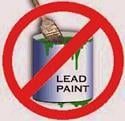 as described within a scope of work for the project, test lead free by a Certified Risk Assessor, Lead Inspector or Certified Renovator
as described within a scope of work for the project, test lead free by a Certified Risk Assessor, Lead Inspector or Certified Renovator
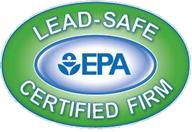
 There has been a lot of confusion regarding the details of the EPA RRP rule. One that seems to pop up over and over is certification requirements for sub contractors. There are two different certification considerations regarding sub contractors; firm certification and worker certification. Let’s take a look at each separately.
There has been a lot of confusion regarding the details of the EPA RRP rule. One that seems to pop up over and over is certification requirements for sub contractors. There are two different certification considerations regarding sub contractors; firm certification and worker certification. Let’s take a look at each separately. Whether working for the general contractor as a trade partner or a 1099 sales person (offers the work), sub contractors must become certified firms by apply for certification through the EPA. Ensuring that the subs they use are certified firms is particularly important for general contractors, because as part of the required documentation under the rule, the renovation checklist must include the names of all workers who participated in RRP activities on the job. If a sub contractor and his workers do work on the job and the sub’s firm is not certified, the EPA will easily be able to find both the general contractor and the sub in violation of the rule. If a general contractor knows that subs must be certified firms, hiring a non-certified firm to work on a job becomes a knowing and willful violation of the rule, which brings with it serious penalties. It’s also one easy way for a customer’s lawyer to suggest the contractor is/was negligent.
Whether working for the general contractor as a trade partner or a 1099 sales person (offers the work), sub contractors must become certified firms by apply for certification through the EPA. Ensuring that the subs they use are certified firms is particularly important for general contractors, because as part of the required documentation under the rule, the renovation checklist must include the names of all workers who participated in RRP activities on the job. If a sub contractor and his workers do work on the job and the sub’s firm is not certified, the EPA will easily be able to find both the general contractor and the sub in violation of the rule. If a general contractor knows that subs must be certified firms, hiring a non-certified firm to work on a job becomes a knowing and willful violation of the rule, which brings with it serious penalties. It’s also one easy way for a customer’s lawyer to suggest the contractor is/was negligent. While deleading activities conducted in residences and child-occupied facilities often involve work methods similar to those typically used in renovation, repair or painting (RRP) activities, such as replacing windows, painting and installing vinyl siding, the two types of activities are distinct from each other in terms of purpose and effect.
While deleading activities conducted in residences and child-occupied facilities often involve work methods similar to those typically used in renovation, repair or painting (RRP) activities, such as replacing windows, painting and installing vinyl siding, the two types of activities are distinct from each other in terms of purpose and effect.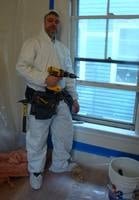 Once you have made the initial determination regarding whether your project is a renovation project or a deleading project, the next question is how to choose a contractor who is licensed and qualified to perform the work. Click on the following link to view a helpful guide on choosing a deleading contractor, “
Once you have made the initial determination regarding whether your project is a renovation project or a deleading project, the next question is how to choose a contractor who is licensed and qualified to perform the work. Click on the following link to view a helpful guide on choosing a deleading contractor, “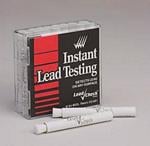
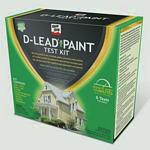
 Given the choice, as Massachusetts and EPA authorized RRP instructor, I will definitely use the Lead Check Swabs in my training classes. I offer some reasons for this choice below. However keep in mind, if you do RRP renovations, you will likely be choosing which test lead test kit to use and why for different reasons than I would as an instructor. I hope the information below helps you make a good decision when you select a lead test kit. Please feel free to add any other comparisons or consideration for choosing a lead test kit by commenting at the end of this article.
Given the choice, as Massachusetts and EPA authorized RRP instructor, I will definitely use the Lead Check Swabs in my training classes. I offer some reasons for this choice below. However keep in mind, if you do RRP renovations, you will likely be choosing which test lead test kit to use and why for different reasons than I would as an instructor. I hope the information below helps you make a good decision when you select a lead test kit. Please feel free to add any other comparisons or consideration for choosing a lead test kit by commenting at the end of this article.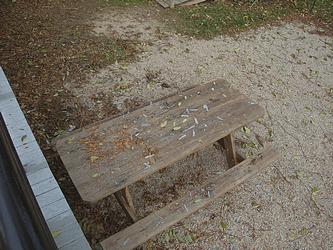
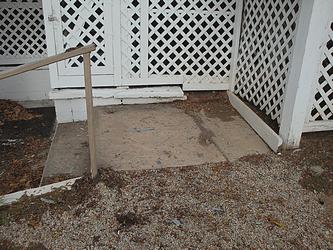 This is an excellent observation and question. The liability in such a situation is huge. I just recently had a conversation about this topic with an attorney well familiar with the RRP rule. Her suggestion was to consider asking the home owner to do testing of the occupants and perhaps even dust wipe testing at the home before beginning any work to establish a point of reference. Discussing this with and asking the home owner to do so would obviously be a sensitive conversation and could likely be a tough sell for many contractors.
This is an excellent observation and question. The liability in such a situation is huge. I just recently had a conversation about this topic with an attorney well familiar with the RRP rule. Her suggestion was to consider asking the home owner to do testing of the occupants and perhaps even dust wipe testing at the home before beginning any work to establish a point of reference. Discussing this with and asking the home owner to do so would obviously be a sensitive conversation and could likely be a tough sell for many contractors.



